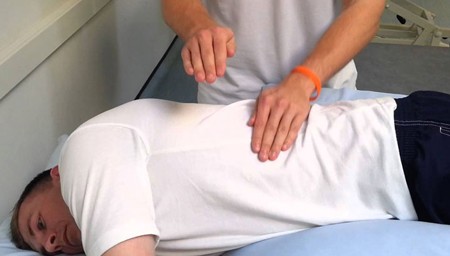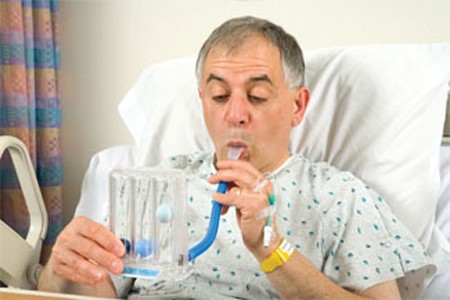
Chest Physiotherapy
Chest physiotherapy treatment is commonly referred to as CPT or Chest Physical Therapy. It is a consortium of physiotherapy services treatment used to treat, reduce or cure the respiratory system. Chest physiotherapy treatment achieves this by removing excess secretions such as sputum, mucus and phlegm, from the lungs or respiratory tract.Doing so improves lung ventilation by making the client to cough and rehabilitating breathing muscles.
Causes of Excess Secretions
The lungs produce mucus, sputum and Phlegm, which are the excess secretions. The secretions help keep the lungs moist and protect against germs to prevent infections. In case of infections, these secretions increase becoming much thicker. A normal and healthy person sheds these secretions easily through coughing. However, where the respiratory system is weak due to illness, the secretions pile up further blocking the respiratory track requiring medical treatment to remove them. This is where chest physiotherapy treatment comes in.
Chest Physiotherapy Treatment
Chest physiotherapy treatment employs different techniques to clear and clean the respiratory tract of the secretions. These techniques include:

Postural Drainage
– Physiotherapists help patients’ clear mucus by targeting specific lung segments. Two techniques are applied in postural drainage :-
1. Chest Percussion – Therapists gently and lightly clap the back, area under the arm and chest. Percussion is mostly used in treating infants and children.
2. Chest Vibration – During Chest physiotherapy treatment, therapists firmly place a flat hand against the patient’s chest wall, stiffen their arm and shoulder, apply light pressure and create a shaking movement while the patients inhale deeply and exhales slowly without straining simulating a cough.

PEPT (Positive Expiratory Pressure Technique)
– involves the use of a small pressure device, the positive expiratory pressure. The patient exhales into this device using a mask.
FET (Forced Expiratory Technique)
– Also referred to as a huff, forced expiratory technique follows PEPT and it forces secretions up the throat which are then removed through the mouth without having to cough.

ACBT (Active Cycle Breathing Technique)
– By using this technique, phlegm is pushed from the small airways at the lungs bases to larger airways at its top through alternating breaths. Pushing the phlegm to the larger airways makes it easy to clean and clear them through coughing and huffing.
Four stages are involved in ACBT :-
- Breathing control – The patient is helped to control their breathing by making it gentle.
- Thoracic expansion – Deep steady and slow breaths through the nose .
- Forced expiration – The patient is advised to breath in and then huff the air out through the mouth.
- Coughing – Forces the phlegm up the mouth.

Incentive Spirometry
– This is used on patients who have had surgery as breathing is painful making them take shallow breaths that eventually lead to build up of secretions. Incentive spirometry is the use of an incentive spirometer to help the patients take deep breaths to prevent the build-up of mucus.
Patients with respiratory blockage can perform very many physical practices in order to regain normal and easy breathing. Chest physiotherapy treatment is helpful to patients with serious chronic lung diseases as well as simple chest infections that cause the inflation of the lungs. We have experienced, ready and available therapists to take you through all the various chest physiotherapy treatment techniques and help you regain a comfortable life with less painful or difficult breathing moments.
Chest Physiotherapy Session
by certified physiotherapist- Done by certified Physiotherapist
- Call us to get an appointment
- Pay at clinic after session
Chest & Lung Function Examination
by OHD- Consultation and examination by Occupational Health Doctor (OHD)
- Focus on work related illness & return to work program
- Include OHD endorsed lifestyle and work modification
For Further Enquiry
Call During Our Open Hours
+603 – 5524 0653 (hotline 1)
+603 – 5510 1009 (hotline 2)
Our Location
Klinik Noridah
VG30, Jalan Plumbum V 7/V, Pusat Komersial Seksyen 7
40000 Shah Alam, Selangor
